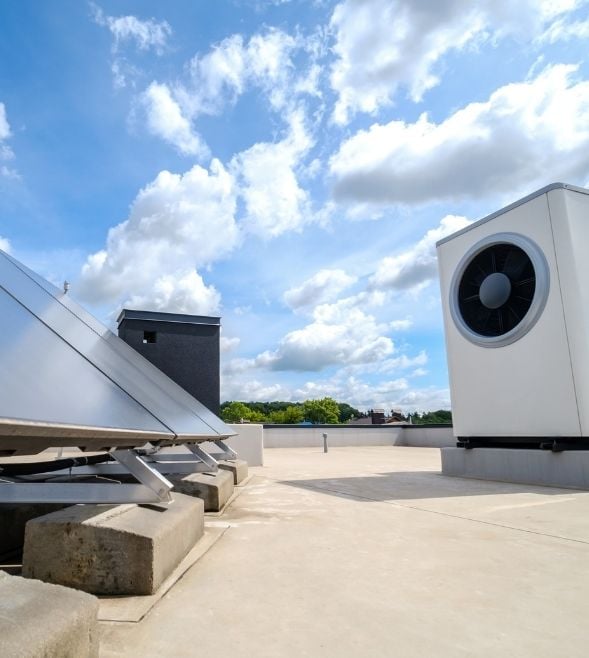
The programme outlined below reflects its current state. Although changes may still occur as a result of parliamentary debate, they are not expected to be substantial.
Mobility and transport: TCO will be a decisive factor
Car taxation
The tax benefit for electric cars will end in 2026: the addition to the taxable income will increase to 22%, the same as for fossil-fuel vehicles. The 30% reduction in motor vehicle tax (MVT) for zero-emission passenger cars will remain until 2028 and decrease to 25% in 2029.
From 1 July 2026, a lorry tax applicable to all domestic and foreign lorries weighing 3,500 kg or more will be introduced, with an expected average rate €0.186 per kilometre. Although the cancellation of the Eurovignette and a lower MVT will partially offset this, the resulting rate pressure will affect transport companies. This underscores the need for accurate mileage tracking and potentially revised pricing structures for customers.
From 1 January 2027, a pseudo-final levy of 52% on the addition (12% of the catalogue value) will be introduced for employers providing fossil-fuel passenger cars (including hybrids) to employees. Zero-emission vehicles, delivery vans and motorcycles will remain exempt from this measure.
Now is the opportune time for employers and leasing companies to review their fleet policy. It will be useful to prepare new Total Cost of Ownership (TCO) calculations, including tax burdens and residual value developments. Furthermore, fleet policies should be adjust in line with the upcoming 2027 rules, and the transition toward fleet electrification will need to be organised.
Excise duty reduction on fuel will be extended
The reduced excise duties for petrol (unleaded), diesel and LPG introduced on 1 July 2023 will remain in effect throughout 2026. Indexation has not been applied since the introduction and will again be suspended until 2026. The aim is to maintain mobility affordability for both businesses and households.
Air passenger tax
From 2027 onward, air passenger tax will be differentiated according to travel distance and final destination with progressive rates: €29.40 (up to approx. 2,000 km), €47.24 (approx. 2,000-5,500 km) and €70.86 (> approx. 5,500 km). This change is expected to make corporate travel policies and airline contracts more cost-conscious, particularly for long-haul and intercontinental flights. The new distance-based levy could also give rise to legal questions.
Energy, tap water and CO₂: dynamic rates system and uncertainty
Energy tax
Energy bills will rise in the upcoming years due to increasing electricity grid rates. To (partially) compensate higher costs, the tax reduction will increase structurally from 2026: from €510.50 (excl. VAT) in 2026 to €521.17 (excl. VAT) in 2030.
This tax credit per electricity connection will apply to small consumers and will be settled through energy suppliers. A structural allocation of €100 million will be provided (approx. €91 million for households, €9 million for businesses).
As of 6 September 2025, the Environmental Tax Act has referred to SBI 2025 codes instead of SBI 2008 with regard to exemptions related to chemical reduction, metallurgical and mineralogical processes. The application remains fundamentally the same. Tip: check that your activities are classified correctly.
Energy tax on hydrogen
Hydrogen is currently taxed in the same way as natural gas. To encourage its use, a lower, separate tax rate for hydrogen will be introduced from 2026. This rate will apply to renewable, low-carbon hydrogen and fossil-based hydrogen alike. The remaining tax treatment will remain aligned with that of natural gas, including applicable exemptions.
In addition, the electricity exemption will be extended to cover electrolytic and metallurgical processes. This extension includes the production of hydrogen using electricity, demineralisation or electrolysis of water, and the purification and compression of obtained hydrogen.
Tax on Tap Water (TTW)
A tax ceiling of 300 m³ per connection (€127.50 max. in 2025) currently applies. Consumption above this threshold is currently exempt from taxation. From 2026, the ceiling will be increased to 50,000 m³, and from 2027, it will be abolished entirely. The tax base will be redefined to include 'water of a drinking water quality level' and the scheme for suppliers with fewer than 1,000 connections will be discontinued. This policy aims to distribute the tax burden more equitably and incentivise reduced water consumption.
CO₂ levy on industry
A climate-neutral economy by 2050 has been has been established as a national goal. Achieving sustainability in international markets is expected to remain challenging in the short term. Consequently, the government will reduce the CO₂ tax rate for ETS 1 and nitrous oxide installations to €78.67 per tonne of CO₂ and increase the number of exempt allowances. The new exemption factor will be set at 1.023.
For waste incineration facilities, however, the rate will gradually increase to €295 per tonne of CO₂ by 2030. This measure aims to further incentivise for carbon capture and storage (CCS). From 2030 onward, exempt emissions will be phased out at an accelerated pace, reaching zero by 2033.
Reforms to waste tax
Waste tax will also undergo several changes:
- The exemption for incineration of sewage sludge will expire in 2027.
- A separate rate for disposal with an exemption will take effect from 2029.
- The generic rate will increase from €39.70 to €90.21 per tonne in 2028, and will continue to rise structurally to €113.81 by 2035.
Companies that generate a great deal of waste will need to account for higher costs, which will likely be passed on to customers accordingly.
International frameworks: CBAM and CSRD will be operational
CBAM (Carbon Border Adjustment Mechanism)
CBAM will become fully operational from 1 January 2026. The 2026 Tax Package amends the Environmental Management Act accordingly. Importers of cement, steel, aluminium, fertiliser, electricity and hydrogen must report and pay for CO₂ emissions generated by non-EU suppliers, requiring direct involvement in supply-chain data flows.
The bill assigns responsibility to the Minister of Finance for the sale and repurchase of CBAM certificates, while the Dutch Emissions Authority (NEa) is authorised to impose sanctions and share relevant data with third parties.
If you delay action on this matter, you may face significant operational challenges at the start of next year: without authorised declarant status, CBAM-covered goods can not be imported. We strongly recommend identifying all import flows, assigning responsibilities, completing a trial report before the end of 2025, and applying for authorised declarant status in advance if you expect to import more than 50,000 kg in 2026. This will help prevent compliance errors and delays.
The European Parliament voted in favour on 10 September, and the Council of the European Union agreed to CBAM simplifications on 29 September.
Please refer to our recent CBAM article for more information.
Other international reporting standards
In addition to CBAM, the Corporate Sustainability Reporting Directive (CSRD) is setting the trend as well: large companies will be required to report on the 2025 financial year starting in 2026, making data collection across the entire value chain even more essential. The EU Deforestation‑Free Regulation (EUDR) further extends these requirements by introducing traceability obligations down to the level of individual plots. CBAM, CSRD and EUDR show multiple areas of overlap, forward-thinking companies are integrating their processes to prevent duplicate data collection and reporting efforts.
For more information, please refer to our recent article on EUDR.
Other tax changes
Polymer levy and recycling
In March 2025, the government decided not to move forward with the polymer levy (plastic tax). The resulting budgetary deficit of €567 million will be offset through an adjustment to the existing waste tax. This measure is expected to negatively affect the recycling industry.
Energy investment allowance (EIA)
In theory, the Energy Investment Allowance (EIA) could be applied above the existing price ceiling of €120 million (2025). A proposal has been made to raise this ceiling to €151 million per taxpayer in 2026. In that case, the total eligible energy investments (both individual and through partnerships) will be capped at €151 million.
For further details please refer to Tax Plan 2026: Important measures for international companies.
Other facilities
- €150 million allocated to the ETS Indirect Cost Compensation Subsidy Scheme through 2028.
- €230 million reserved for upcoming IPCEI initiatives in the semiconductor sector.
- The SDE++ budget will be reduced to €8 billion for the upcoming year, partly due to underutilisation of available funds.
For more information about SDE++, please refer to our recent article on SDE++.
Green investments in Box 3
Tax benefits continue to be phased out, with fiscal neutrality becoming the norm. The abolition of green investment facilities has been postponed until 1 January 2028. The Box 3 exemption will be reduced to €200 (individuals) and €400 (tax partners), and the corresponding tax credit will amount to 0.1% of this value. All facilities and associated regulations will expire on 1 January 2028. After that, returns on sustainable investments will depend primarily on market dynamics and societal incentives rather than from tax advantages.
In summary: make sure to act now
The shift from tax incentives to regulatory measures is becoming increasingly evident. Organisations that proactively reassess their sustainability- and tax strategies well in time will be best positioned to benefit from the transition. Despite ongoing political uncertainty, the overall political direction is expected to remain consistent. The above overview is not exhaustive; additional sustainability-related topics have also been updated.
Would you like to discuss how these developments may affect your organisation?
Our Sustainable Tax Team can support you in translating these regulatory changes into practical policies, processes and strategic decisions, ensuring that sustainability will be an integral part of your business strategy.








